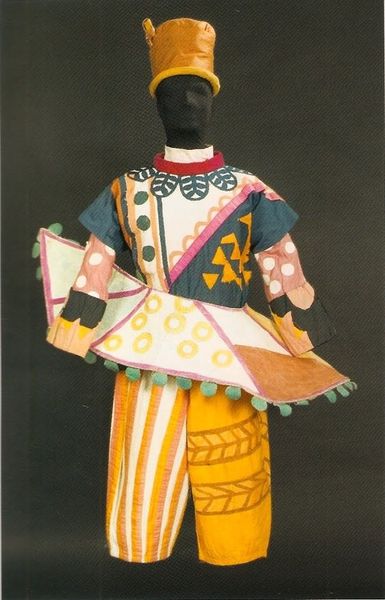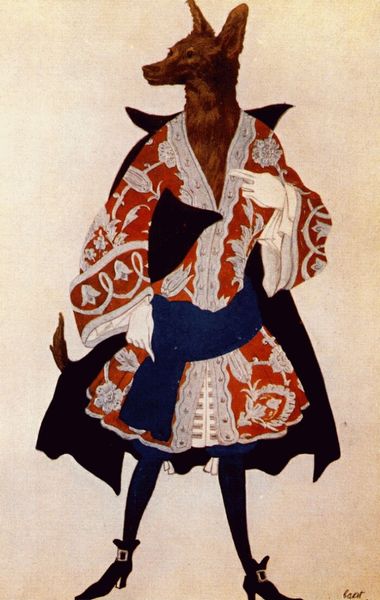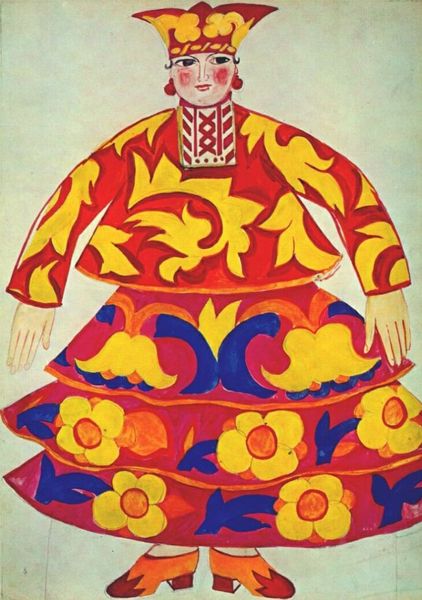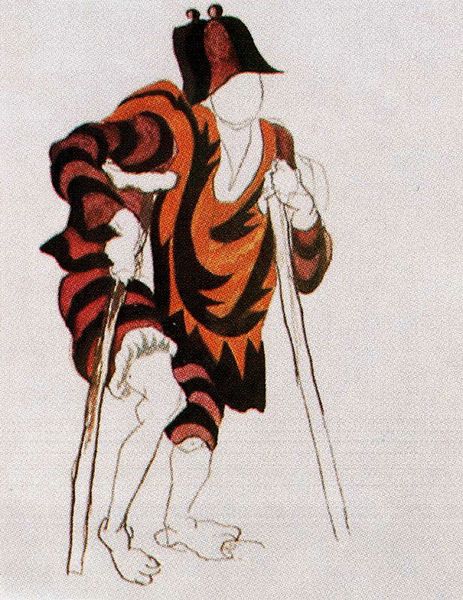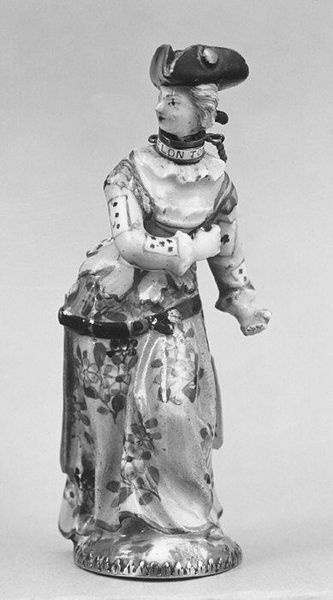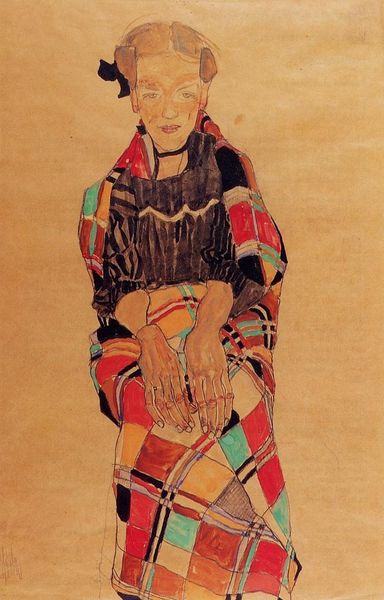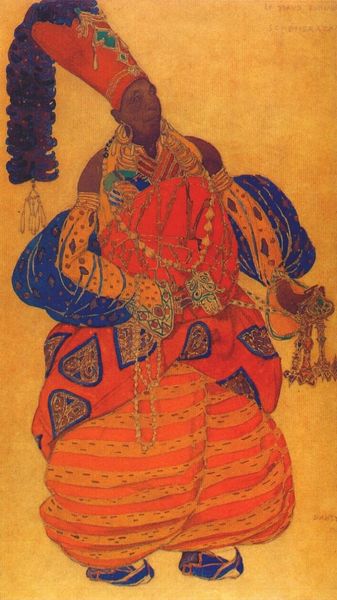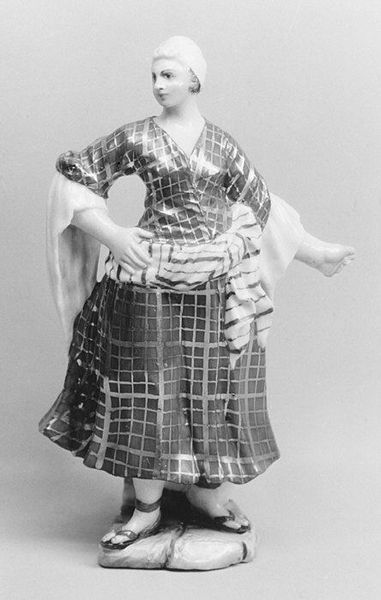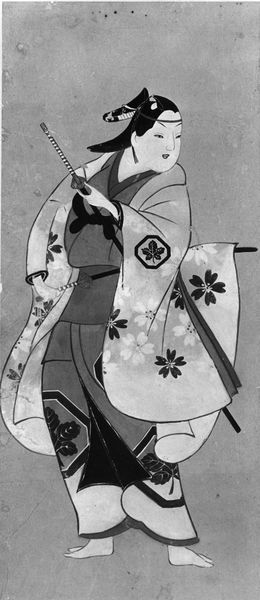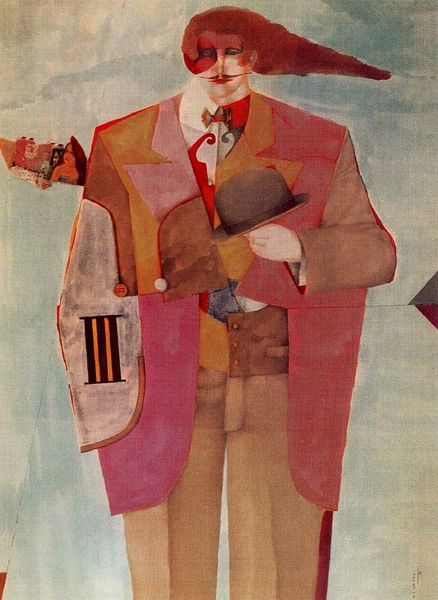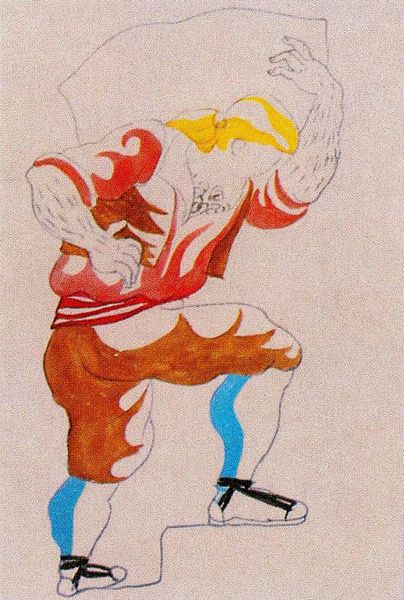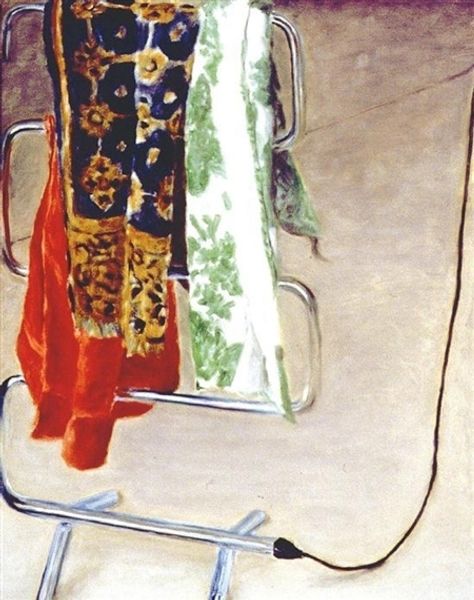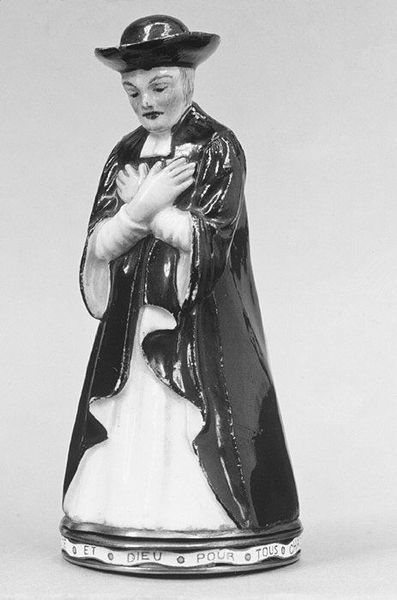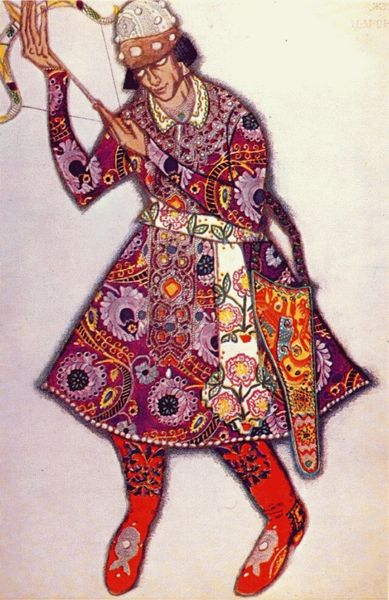
Copyright: Public domain
Curator: This is Léon Bakst’s “Russian Peasant Woman,” a tempera painting created in 1922. Editor: My first thought is color. The tones seem vibrant and deliberately chosen. There’s almost a folk-art simplicity in the application, despite the work's symbolic depth. Curator: Absolutely. Bakst was deeply influenced by folk traditions and Symbolism. Her costume is, of course, more than mere fabric, acting as a visual language. Those colors are incredibly telling in Russian folk dress. Red traditionally symbolizes beauty, life force; yellow, faith; and blue, the heavens, suggesting a profound connection to spiritual and earthly realms. Editor: It also reflects a wider cultural moment. 1922 was a period of huge social upheaval following the revolution, a time when many artists looked to 'authentic' rural life, mythologizing the peasantry, even as it was disappearing under the Soviet project. Bakst, with his ties to the Ballets Russes, no doubt brings a degree of romanticism. Is there, perhaps, an elegy to a fading past embedded in the visual construction? Curator: Undoubtedly. The flowers on her headscarf, for instance, likely reference fertility and abundance. It's interesting that she's shown partially from behind, turning back toward the viewer but not engaging fully. This positioning invokes a sense of mystery. She’s looking back, but also maybe turning her back to something at the same time. The color combinations can appear contradictory as a result. Editor: And I suppose those choices position her in conversation with the dominant discourses of identity and nationhood in early Soviet Russia? She's a figure caught between tradition and modernity. Curator: Exactly. Bakst employs an approach steeped in historical and cultural knowledge but simultaneously comments on a critical turning point for the country. He presents a complex vision through seemingly simple and familiar signs. Editor: It certainly challenges viewers to contemplate the intersection of folklore, fashion, and political change during the cultural revolution. A beautiful collision of worlds contained in a painting. Curator: A truly resonant piece, sparking many questions regarding its era and subject.
Comments
No comments
Be the first to comment and join the conversation on the ultimate creative platform.
